Ever wondered how a capybara would stack up against a wombat? You’re not alone. As someone who’s spent years studying these fascinating creatures, I’m here to break down the epic battle of cuteness between these two unlikely contenders. Let’s dive into the world of capybaras and wombats and see who comes out on top!
The Tale of Two Unique Animals
First things first, let’s get one thing straight: capybaras and wombats couldn’t be more different if they tried. It’s like comparing apples to oranges, but way cuter.
Capybara: The Gentle Giant of South America
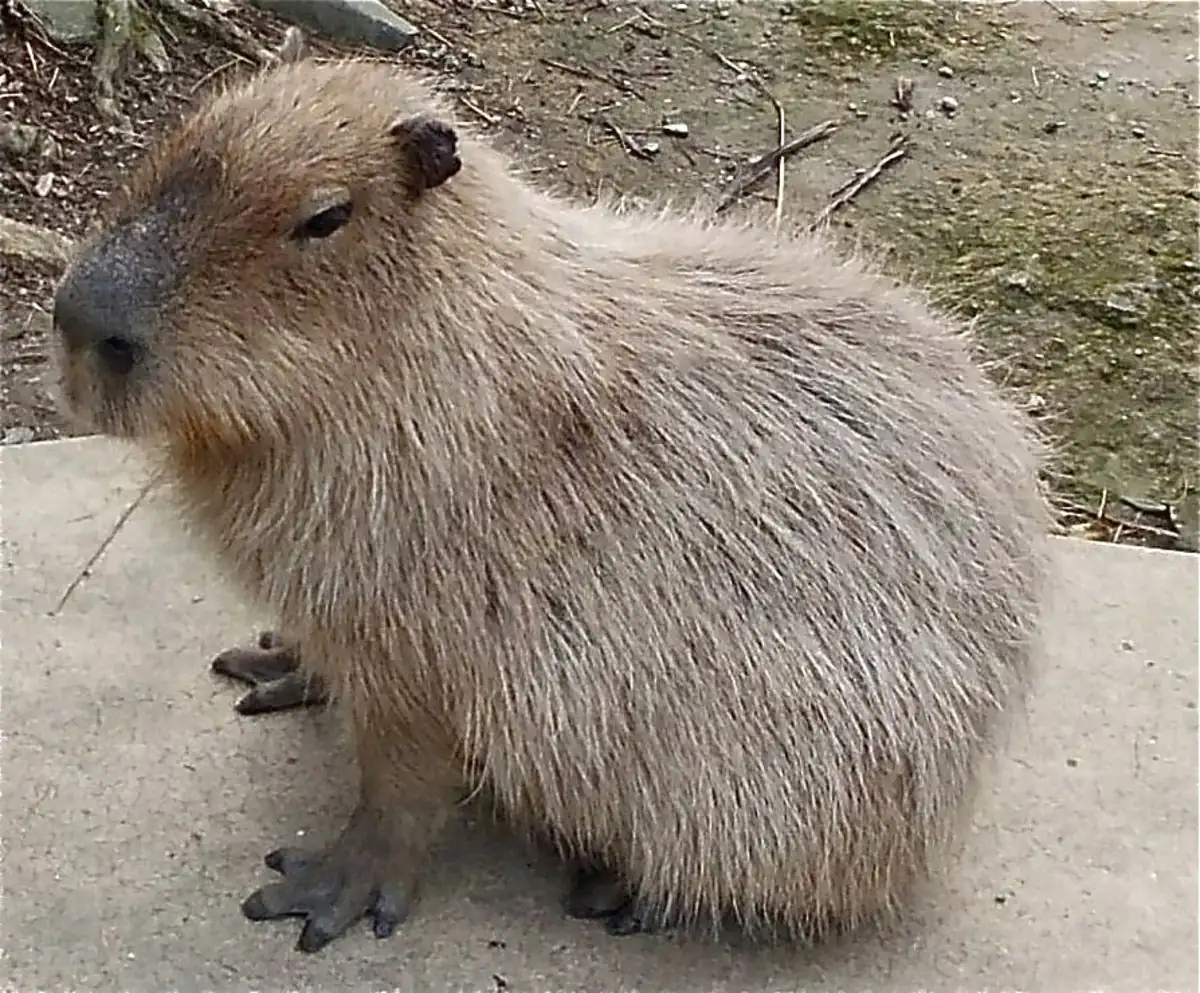
Capybaras are the world’s largest rodents, native to South America. These chill dudes are basically the size of a large dog, weighing up to 150 pounds. Imagine a guinea pig on steroids, and you’re pretty close.
Wombat: Australia’s Cuddly Bulldozer
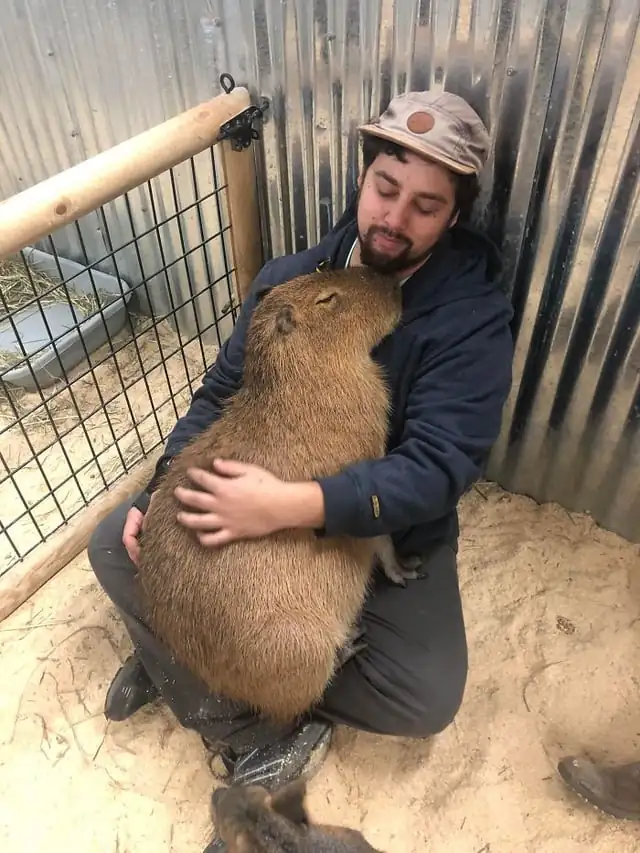
Wombats, on the other hand, are marsupials found only in Australia. They’re like nature’s tanks, built low to the ground with a sturdy body that can weigh up to 80 pounds. Think of them as furry, living bulldozers with pouches.
Size Matters: David vs. Goliath
When it comes to size, the capybara takes the cake:
- Capybara: 3.5-4.4 feet long, 150 pounds max
- Wombat: 2.5-3.3 feet long, 80 pounds max
The capybara is clearly the heavyweight champ here. But as we all know, size isn’t everything in the animal kingdom.
Habitat: Where the Wild Things Are
These two couldn’t have more different tastes in real estate if they tried:
Capybara’s Waterfront Property
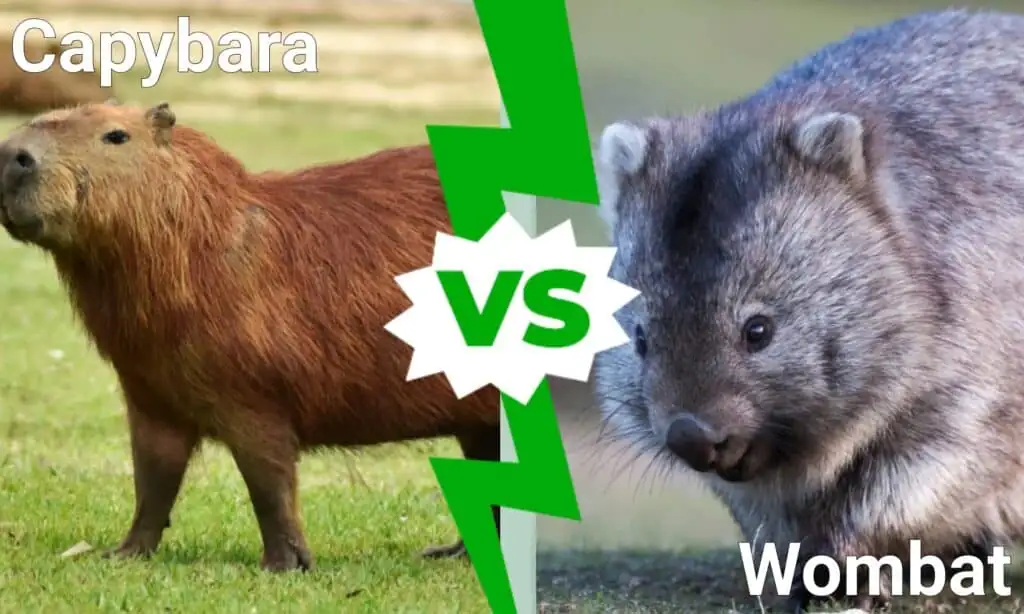
Capybaras are semi-aquatic and love nothing more than lounging by the water. They’re found near lakes, rivers, and marshes in South America. These guys are so at home in the water, they can hold their breath for up to five minutes!
Wombat’s Underground Mansion
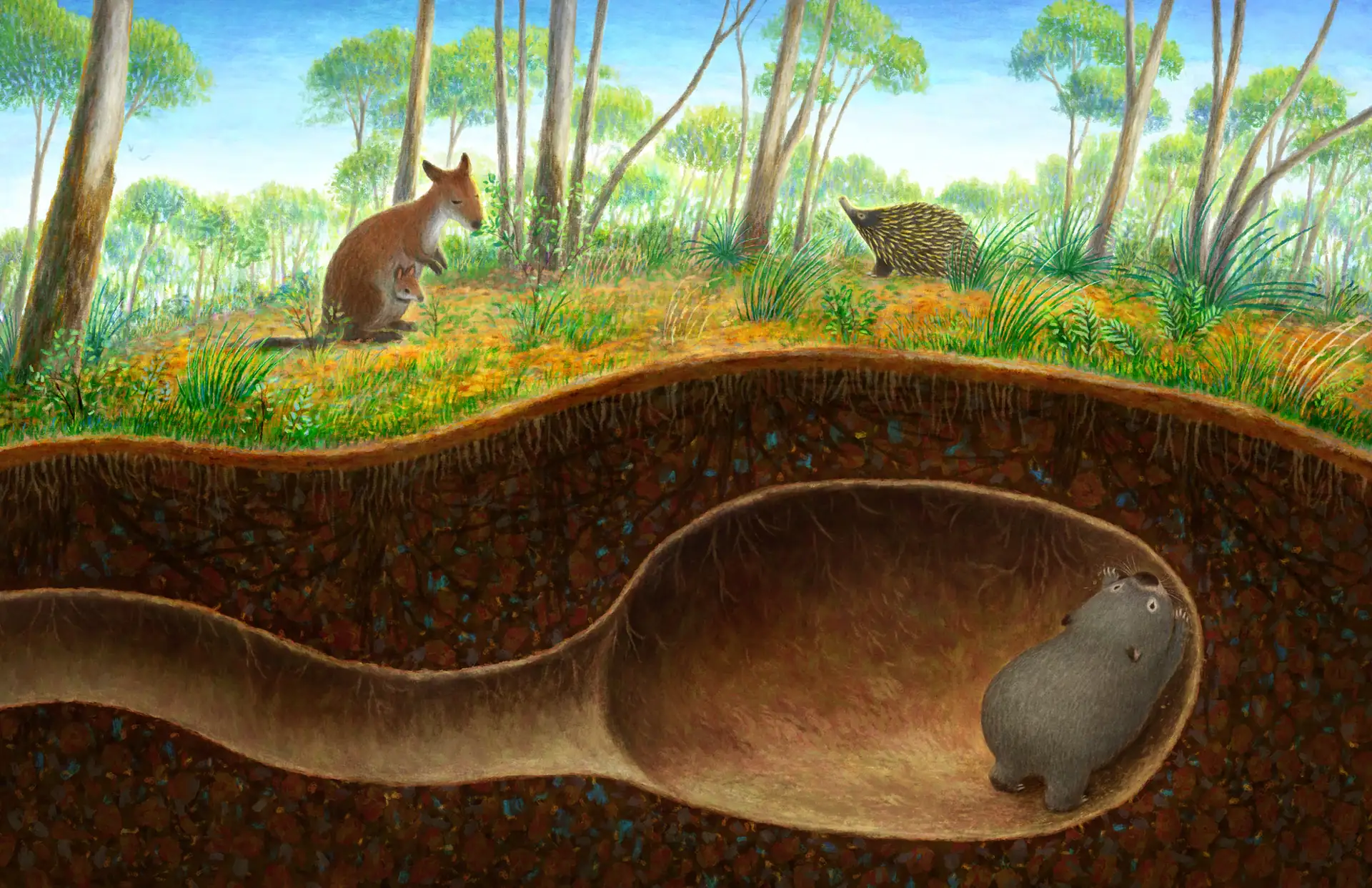
Wombats, on the other hand, are all about that subterranean life. They dig extensive burrow systems in forests, mountains, and heathlands across Australia. Their burrows can be up to 100 feet long – talk about a fixer-upper!
Social Butterflies vs. Lone Wolves
Here’s where things get interesting:
Capybara: The Party Animal
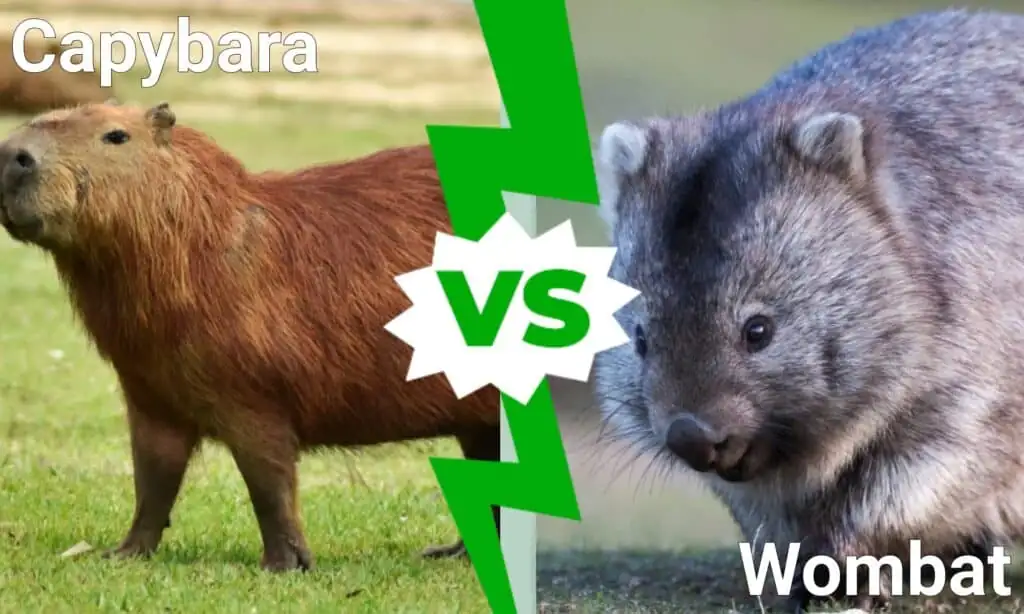
Capybaras are the social media influencers of the animal world. They live in herds of up to 100 individuals and are known for their chill, friendly demeanor. They’re so social, other animals often hang out with them. It’s like they’re hosting a constant pool party.
Wombat: The Introvert’s Dream
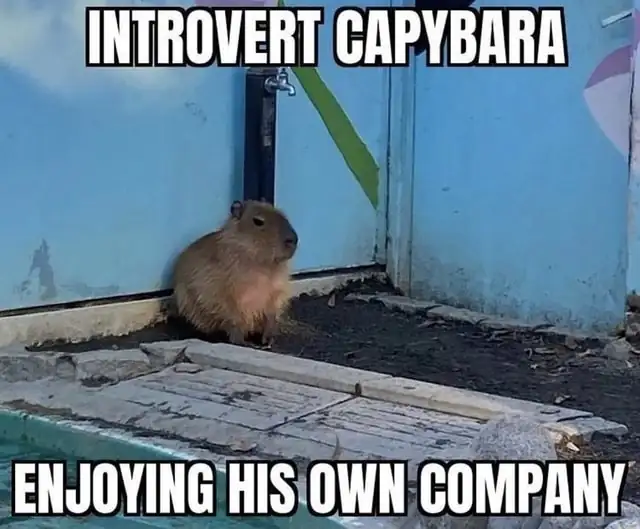
Wombats, in contrast, are the introverts of the animal kingdom. They prefer to live alone, coming out mainly at night to graze. They’re not antisocial; they just value their “me time” a lot more than capybaras do.
Diet: You Are What You Eat
Both animals are herbivores, but their diets are as different as their habitats:
Capybara’s Buffet
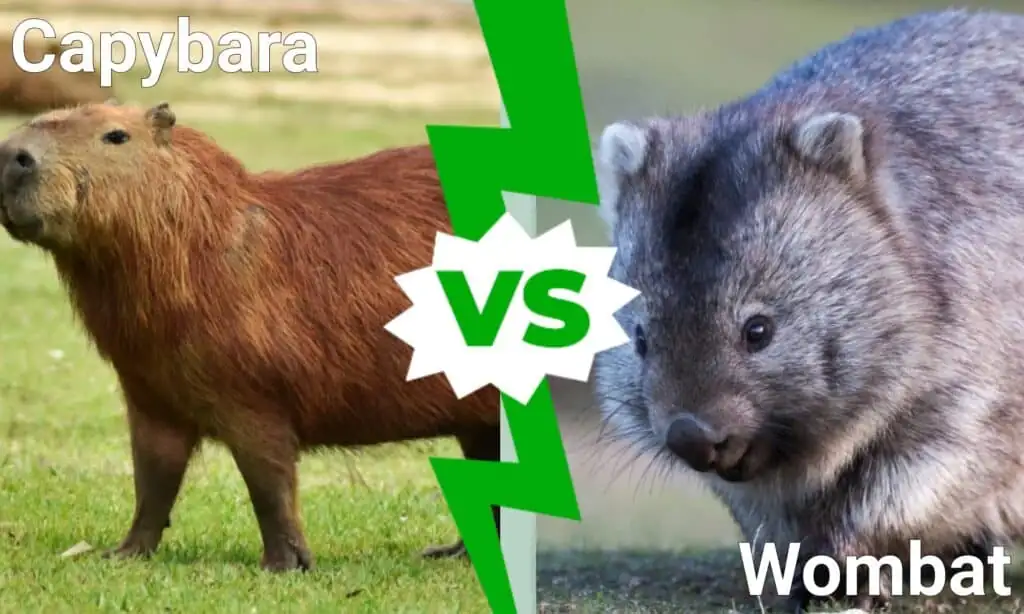
Capybaras munch on grasses, aquatic plants, and even tree bark. They’re not picky eaters and will happily graze on whatever vegetation is available. They even eat their own poop to help with digestion – now that’s recycling!
Wombat’s Gourmet Grass
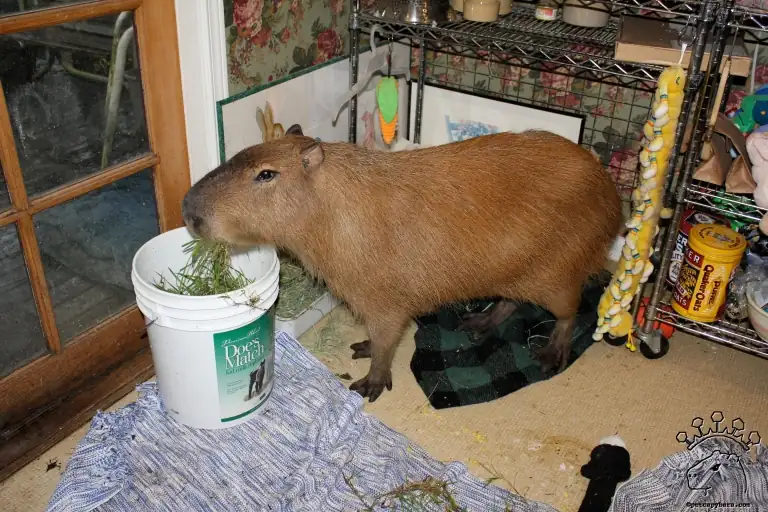
Wombats are grass specialists. Their diet consists mainly of various types of grasses, which they digest slowly thanks to their super-long intestines. They’re like the lawn mowers of the Australian outback.
Quirky Traits: The Fun Facts
Now, let’s get to the good stuff – the weird and wonderful traits that make these animals truly unique:
Capybara’s Cool Features
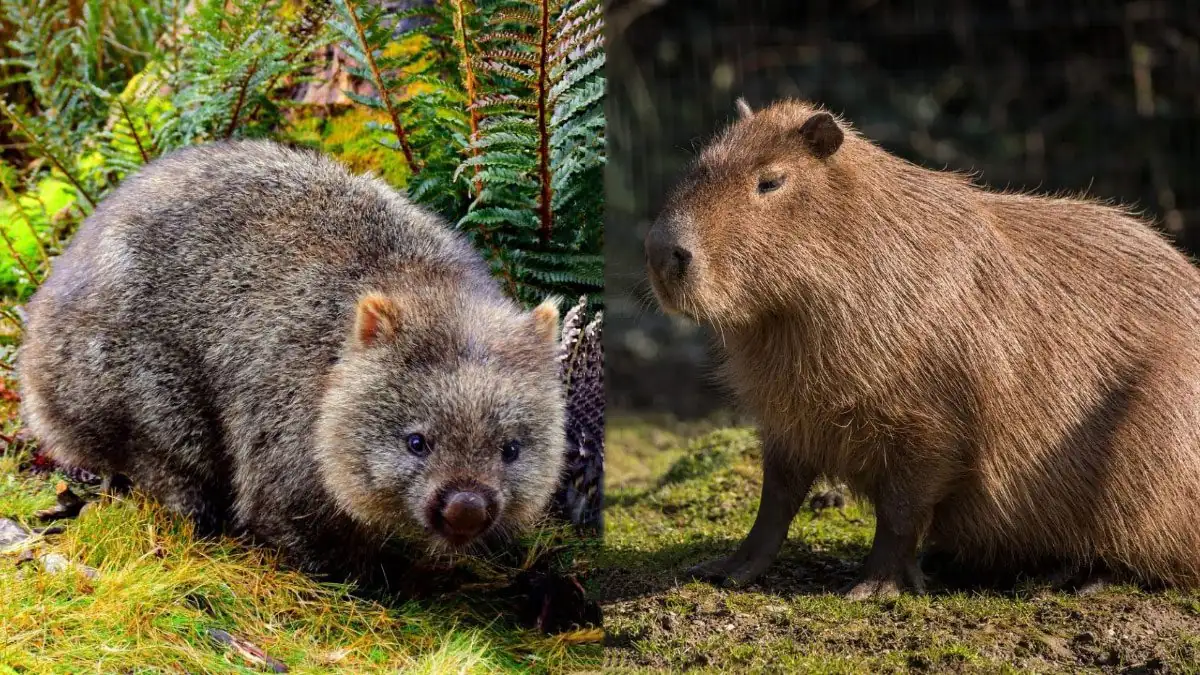
- Can sleep in water with just their noses poking out
- Have webbed feet for swimming
- Are so chill that other animals often sit on them
Wombat’s Wacky Characteristics
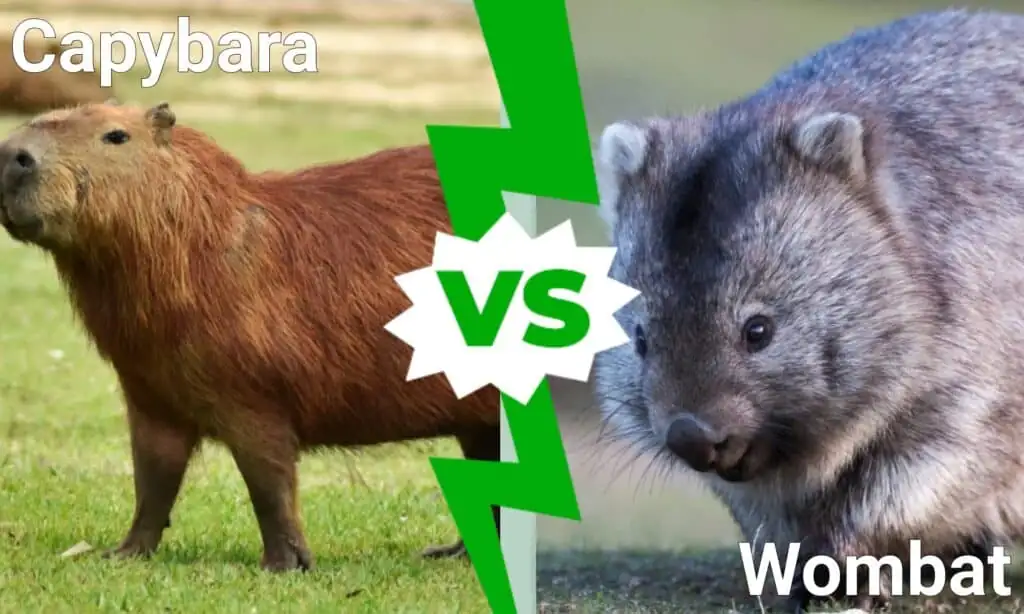
- Poop cube-shaped droppings (yes, you read that right)
- Have backward-facing pouches to avoid filling them with dirt while digging
- Can run up to 25 mph in short bursts
The Verdict: Who Wins?

So, who wins in the capybara vs. wombat showdown? The truth is, it’s a tie. These animals are so different and so awesome in their own ways that it’s impossible to pick a winner. It’s like trying to choose between pizza and ice cream – they’re both great for different reasons.
Capybaras win in the size and social categories, while wombats take the prize for digging skills and unique poop shape (bet you didn’t think that would be a category, did you?).
FAQs: Everything You Wanted to Know But Were Afraid to Ask
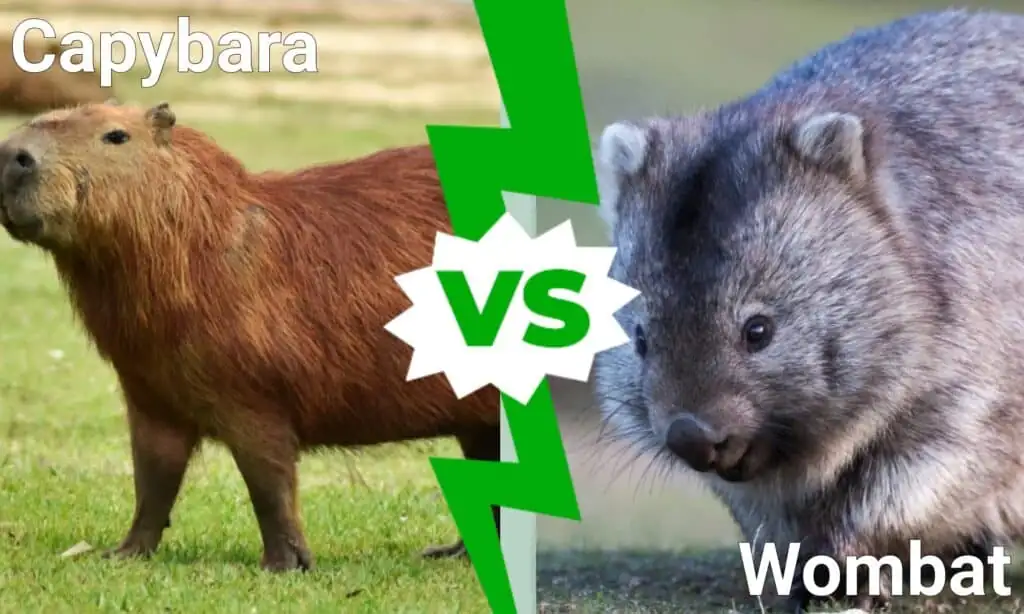
Q: Can capybaras and wombats be pets?
A: While they’re both adorable, neither makes a good pet. They have specific needs that are hard to meet in a domestic setting. Plus, it’s illegal to keep them as pets in many places.
Q: Do capybaras and wombats ever meet in the wild?
A: Nope! They live on different continents and in completely different habitats. A capybara in Australia would be as out of place as a wombat in the Amazon.
Q: Which animal is more endangered?
A: Some wombat species, like the Northern Hairy-Nosed Wombat, are critically endangered. Capybaras are not currently endangered, but habitat loss is a concern.
Q: Can capybaras and wombats swim?
A: Capybaras are excellent swimmers and love the water. Wombats can swim if they have to, but they’re not big fans of it.
Q: What’s the lifespan of these animals?
A: Capybaras live about 8-10 years in the wild, while wombats can live up to 15 years.
The Bottom Line
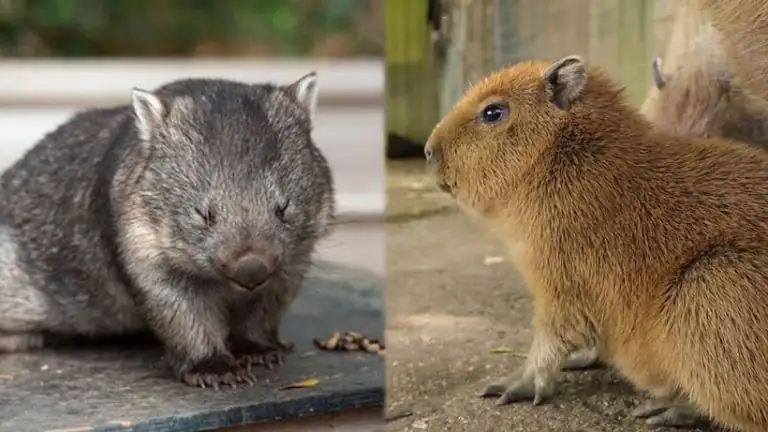
At the end of the day, capybaras and wombats are both incredible animals that have adapted perfectly to their environments. Whether you’re team capybara or team wombat, one thing’s for sure – the animal kingdom is full of amazing creatures that never cease to surprise us.
So, next time you’re having a debate about which animal is cooler, remember this: in nature, everyone’s a winner in their own habitat. Unless you’re talking about cube-shaped poop. Then wombats definitely take the crown.
